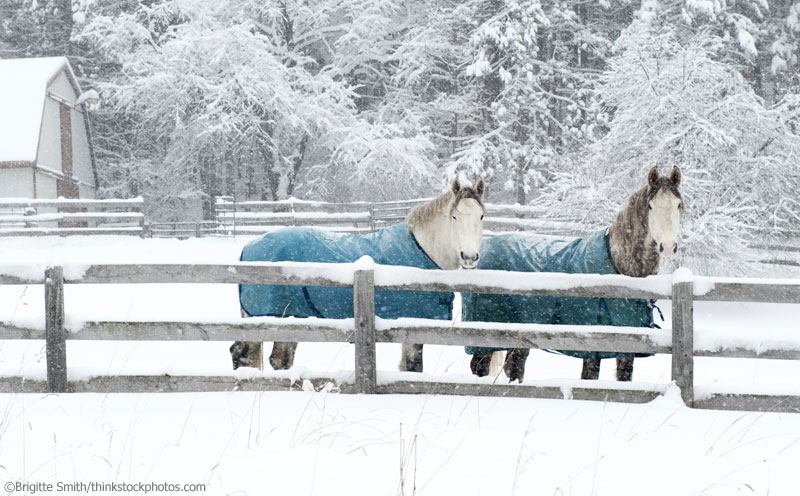
In our Ask the Vet column, Dr. Lydia Gray answers your horse-health questions at horseillustrated.com/AskTheVet. Got a question for Dr. Gray? Send it to hc-editor@i5publishing.com and use subject line “Ask the Vet.”
Q: I have two new horses this winter on 24/7 turnout. One is an athletic build and has the start of a nice fluffy coat. The other is more classic stock horse and if anything is a little on the heavy side, but has put on very little noticeable coat. I live in the upper Midwest and it gets very cold here. As the winter goes on, how do I evaluate these horses for their potential to need a blanket or to spend more time in the barn?

A: As a survivor of last year’s Polar Vortex, I have to agree with you that it can get very cold in the Midwest! So it’s very important that we closely monitor the weather and our horse’s response to the weather.
This question prompted me to sit down and spend some time rereading the Sixth Revised Edition of NRC’s Nutrient Requirements of Horses, published in 2007. Here are some facts that you can use to help base your decision:
- There are five weather-related variables that affect horses: temperature, wind, sun, rain, and humidity with temperature playing the largest role.
- Young, thin, or aged mature horses are less cold-tolerant than mature horses.
- When cold weather occurs, diet changes for susceptible horses must be made much sooner than for mature horses in good body condition.
- Cold weather creates an increased demand mainly for energy. . . Feeding good-quality hay free-choice may be the simplest way to supply additional digestible energy for most idle, adult horses during cold weather.
- It was concluded that digestible energy intakes of adult horses at maintenance should be raised 2.5 percent for each degree Celsius below the Lower Critical Temperature.
What is the Lower Critical Temperature? The NRC first defines the “thermoneutral zone,” which is the temperature range when metabolic heat production does not need to be increased to maintain thermostability or body core temperature. That is, it’s the range of temperatures in which the horse does not need to expend any energy either keeping warm or cool. Therefore the Lower Critical Temperature is the lowest or coldest temperature at which the horse doesn’t have to burn calories to keep himself warm.
Turns out the Lower (and Upper) Critical Temperature isn’t a fixed number, as it can vary with age, body condition, breed, season, adaptation and climate. In general though, for adult horses in northern climates it can get as low as 5° F before their body must generate heat to keep warm. In more temperate climates—such as the southern states—the Lower Critical Temperature is a bit higher, like 40° F.
There was some interesting research back in 1991 by MacCormack and Bruce that said shelter reduces heat loss during cold exposure by 9%, blankets reduce it by 18%, while shelter AND blankets combined reduce heat loss by 26%.
The take-home here is that where you live (and how long your horse has lived there), as well as other individual factors such length of hair coat, amount of body fat, and just how well a particular horse tolerates the cold should all factor in to your decision if and when and how much to blanket. If you listen to your horse, he will tell you!
Liked this article? Here are others you’ll love:
Monitoring a Horse’s Weight in Winter





